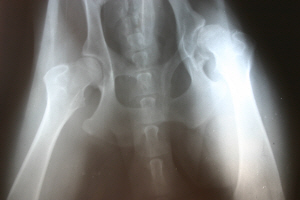Sacroiliac Joint dysfunction or SI joint pain, is discomfort in the joint between the sacrum and the right and left iliac bones. Imagine for a moment that you have a ball in a string. The string is your vertebral column, your spine, and the sacrum is a triangular shaped bone at the very end. While most of the bones on this string are mobile the sacrum is actually made of five different vertebra that are fused together and do not move. The iliac bones are two large bones at the back of the pelvis that complete the circle which makes up the pelvic girdle.
Going back to that string and ball for a minute, the string is attached to the ball where the iliac bones and the sacrum meet. There is very little motion at the joint, but the bones are not fused. Normally there is less than 4° of rotation at the SI joints because most of the motion happens either at the hips or in the lumbar spine.
The job of the Sacroiliac joint is to support the entire weight of the upper body when we are standing or erect. This places a very large amount of stress on that particular joint which can lead to wearing of the cartilage and arthritis. (1)
Most people think of arthritis as a problem that occurs in a highly mobile joint, such as the hip, knee, ankle and hands or wrist. But truth be told arthritis can develop in any joint that has cartilage and any degree of motion or movement. In the recent past scientists have discovered that the spaces between the bones of the head, which were formally thought to have fused into place, are actually somewhat mobile. However, because they are not true joints and have no cartilage and no significant motion they also do not develop arthritis.
Individuals who experience sacroiliac joint problems may suffer from SI joint dysfunction, SI joint syndrome, SI joint strain and SI joint inflammation. While they may appear to name almost the exact same condition, there are minor variations that point to a variety of causes for SI joint pain.
The SI joint allows our body some twisting motion when we use our legs. Without these small motions the pelvis would be at a greater risk for fracture. Most of the time injuries or dysfunction are related to either a hypo mobility or hypermobility of this joint. In other words the joint moves too much or not enough.
The causes of this pain can be split into four different categories. SI Joint dysfunction can be caused from trauma, biomechanical forces, hormonal imbalances and inflammatory joint disease. A traumatic injury is caused when there is a sudden impact such as when landing suddenly on the buttocks. Biomechanical dysfunction usually occurs over a long period of time and is due to increased activity or a change in occupation or sports. It can be brought on by of leg length discrepancy, over pronation or muscle imbalances. (2)
Women are more prone to having SI Joint dysfunction during pregnancy because of the hormonal changes which increase the laxity in the pelvis region and therefore creating a hyper mobile joints. Combining with an increased weight load in the abdomen there can also be mechanical changes. Inflammatory joint diseases such as ankylosing spondylitis can also cause hypo mobility to the SI joints and therefore lead to SI Joint dysfunction.
The most common symptom is pain, pain in the lower back or the back of the hips. Some individuals report pain in the thighs or groin and in many cases it may be difficult to determine the exact source. Pain is typically worse when standing and walking and will improve when lying down.
Sacroiliac inflammation responds well to conservative therapy. The first step is to avoid any activities that cause symptoms. This may mean avoiding sports until the symptoms subside. Individuals will also find relief using anti-inflammatory medication to minimize the inflammation and using ice over the area for the same purpose. Even when the pain goes away the anti-inflammatory properties of medication and ice are important to the healing process.
Once inflammation has subsided your physician may recommend physical therapy to help strengthen the muscles around the joints and increase the flexibility. If all of these treatments fail an injection of corticosteroids will deliver more powerful anti-inflammatory medication directly to the area. (3)
If the pain is mild you can try using rest and ice. Anti-inflammatory medications such as ibuprofen may be helpful if they do not interact with any other underlying medical conditions that you may suffer from or other prescription or over-the-counter medications that you are already taking. Check with your primary care physician if you’re considering ibuprofen for any length of time and with your pharmacist regarding drug interactions.
References
(1) The Sacroiliac Research Foundation: SI Joint Overview
www.sacroiliacfoundation.com/overview.html
(2) NY Sports Medicine and Physical Therapy: Sacroiliac Joint Dysfunction
http://www.nysportsmed.com/index.php?/Back-Pain/sacroiliac-joint-dysfunction.html
(3) The Journal of Manual & Manipulative Therapy: Evidence-Based Diagnosis and Treatment of the Painful Sacroiliac Joint
http://www.ncbi.nlm.nih.gov/pmc/articles/PMC2582420/


Recent Comments